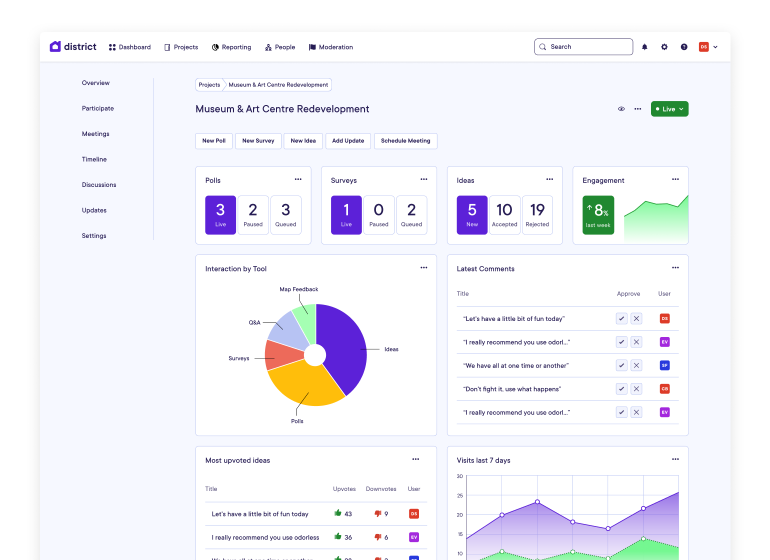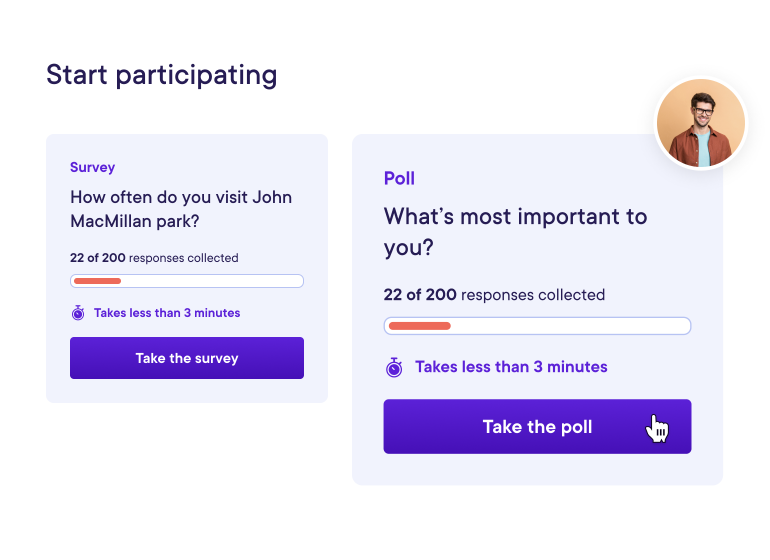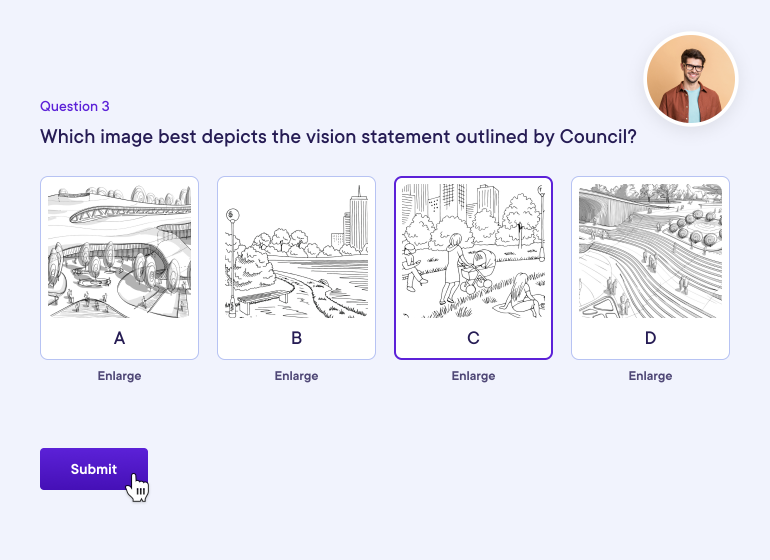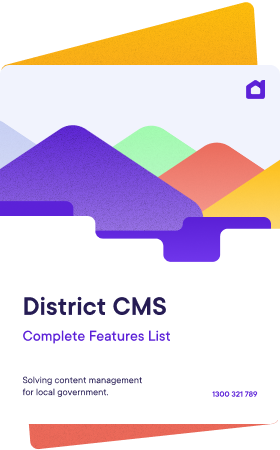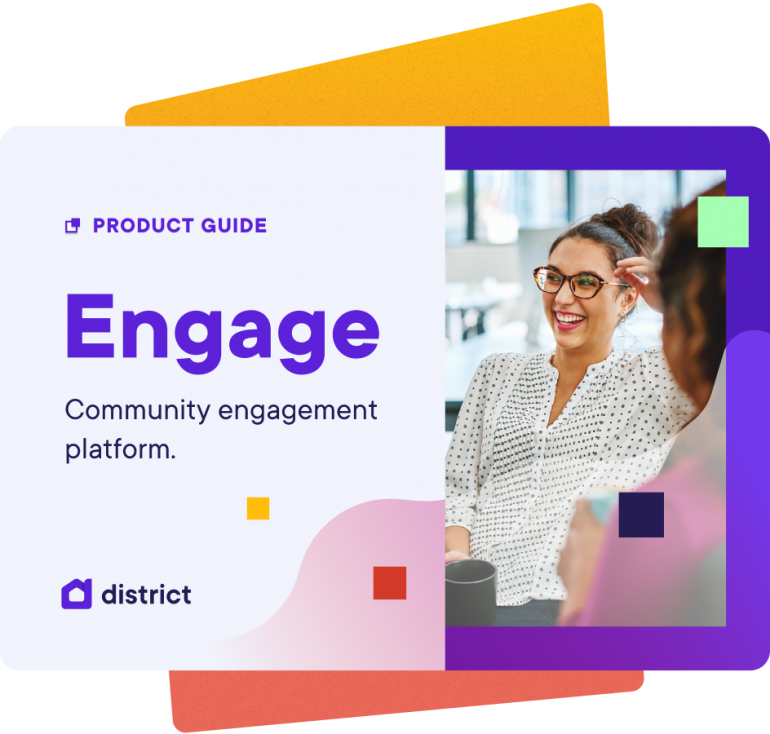Data-driven decision-making can boost community engagement
Making data-informed decisions about local communities has never been more front of mind for local councils.
With Victoria’s newly established community engagement guidelines, Victorian councils are carrying out more research and data collection than ever before. And although they’re leading the charge, they’re certainly not alone. All over Australia, local governments are following suit.
Why? Firstly, it’s simply best practice. Secondly, their constituents are demanding it. Social media now gives voices to those who’d previously remained unheard, which means local council decision-makers are receiving more feedback than ever before.
There’s also a cultural move towards more collaborative decision-making processes. These factors all make informed data the best tool councils have to ensure they navigate this shift appropriately.
Purpose-built community engagement platforms such as District Engage play a vital role in providing greater local government transparency and accountability, while also driving greater digital community participation. But most importantly, councils can now offer a diverse, democratised process for attaining better outcomes – for both themselves and their ratepayers.
Additionally, with increased efficiency and comprehensive data analytics, decision-makers can ‘get it right the first time’ via input from the most affected people.
But what exactly are these platforms, and how do they help residents to become more actively engaged with local government?
Simplifying the steps for informed decision-making
Navigating the process of collecting, storing and analysing data from a diverse population is a challenging endeavour. Making key decisions about that population requires consistent input from constituents, and collecting that input requires a digital solution.
Purpose-built community engagement platforms like District Engage have the advantage of increasing digital participation, giving local governments greater insight into the needs of their citizens. In doing so, they help to facilitate better outcomes and foster a collaborative spirit between council and the community.
The following steps can act as a framework to help decision-makers grow and diversify the consultation process. They negate the logistical disadvantages of analogue data collection, while also streamlining the task of making the right, data-driven decision.
1. Clearly identify objectives
Unless councils identify the right objectives and desired metrics from the very start, they’re unlikely to collect the right data. This means that analysing any data they’ve collected later in the decision-making process will likely yield poor conclusions.
More often than not, wider outreach will lay the foundation for choosing the right questions and developing relevant, attainable KPIs. But how do you gather this information in the first place?
Integrated questionnaires and input devices are core elements of community engagement platforms. Platforms like District Engage provide several methods of collecting the right data from the outset. These include:
- smart forms
- quick polls and dynamic charting
- topic-based forums
2. Consult internally for existing data sources and frameworks
Gathering input from a diverse range of internal sources is critical for achieving both short- and long-term community goals. Surveying and engaging from within is a great way to enhance and solidify collaborative best practices.
Taking into account that valuable input from different departments will enable you to confidently guide future operations. It will also help you to understand each stakeholder’s roles, responsibilities and processes, and define what success and progress in community initiatives will eventually look like.
Integrating District Engage with District CMS Multisite and District Intranet is a natural first step in navigating the internal decision-making that then informs wider community consultations.
3. Decide how to collect and prepare the right data
Collecting reliable, trustworthy data is always a challenge, as is organising it effectively. Inside the many local government departments, there’s a diverse collection of views and information – much of which will be irrelevant to a lot of projects.
Understanding what constitutes ‘relevant data’ is key to ensuring your council effectively prepares for community engagement consultations.
Only after this step can you begin to start the data gathering and efficiently collate, prepare and prioritise it as the next steps in your community engagement process.
4. Analyse and explore data
The final step in making sense of the newly acquired data is to analyse and explore it. For most decision-makers, being able to make this information visual is a handy tool for both communication and decision making.
By identifying and curating separate layers of data, councils can use validated analytics to make a justifiable, data-informed decision.
District Engage’s comprehensive toolbox provides graphs, charts and map-based feedback to make this step quick and seamless.
As a result, local governments can analyse and communicate their findings in a way that has been previously unattainable.
Data-driven decision-making in action
Local governments need to make a variety of decisions every day. Without effective transparency and community engagement, the quality of those decisions can quickly diminish, with a negative impact on desired outcomes.
Let’s take a closer look
Imagine that a council wants to replace the surface of a natural grass sporting field with artificial turf. This initiative appeals to decision-makers as a much-needed modern upgrade. It will improve amenities, reduce maintenance costs and allow the council to redirect water to other resources that need it.
On paper, this appears to be a sound, justified course of action. There’s just one problem - the council didn’t consult its community first.
Because the local council failed to survey the needs of facility users, nobody from the community participated in the decision. And that lack of community participation led to local community members overwhelmingly objecting to the project. This could have been avoided should the council have reached out and gathered feedback before this decision was made.
How District Engage can help local governments to create better decision outcomes
A robust, flexible, purpose-built community engagement platform like District Engage would have mitigated all of this council’s subsequent issues.
An all-in-one digital engagement platform can provide everything the public needs to participate in and contribute to the decisions that impact their daily lives.
By involving a more diverse, distinct spectrum of voices in planning and developing projects as a community, councils and government departments can make better, more data-informed decisions, and ultimately:
- create better outcomes for all parties involved
- feel more confident in the decisions they make
- validate any decisions with clear data
- ensure they focus on the things that matter to their ratepayers
- remove barriers to continued community participation
District Engage offers government departments and councils a simple, effective way to collect, gather, store, analyse and publish data.
It simplifies and streamlines the consultation process, providing a channel for rich, meaningful conversations with constituents. At the same time, it reduces unnecessary admin overheads via an elegantly designed platform that automates analysis and reporting.
Operating as a seamless communications solution, District Engage offers those being consulted a simple way to effectively share their ideas so you can make the decisions that matter. With automatic data field generation and strict data governance, collecting accurate data and integrating it into existing platforms and third-party applications is a seamless experience.
What about security?
We’ve talked about why sourcing a broad range of extra data is a fundamental part of consistently acquiring community input. But storing that data in a way that maintains its security is a valid concern.
Without solid data governance, any trust built from greater accountability and transparency is lost.
This is why District CMS adheres to a strict data governance policy with a strong focus on data sovereignty. We store all collected data safely on Australian servers. Our secure processes cover data storage, infrastructure and personnel, ensuring that any data we collect complies with both state and federal laws.
Don’t wait – connect with your community today
Without the right community engagement platform, the process of making collaborative, data-driven decisions is far more costly and difficult than necessary. Adding a simple way to amplify the voices of the local community can facilitate better outcomes for both local governments and their constituents.
District Engage enables your council to collect, analyse and revisit constituent input. It offers access to clearer insights, greater overview of consultation management and advanced data analytics that are easy to visualise, report and export.
Feel confident in your decisions and the data that helped you make them.
Let us guide you through the platform and show you how it can enhance and democratise your data-driven decisions.

